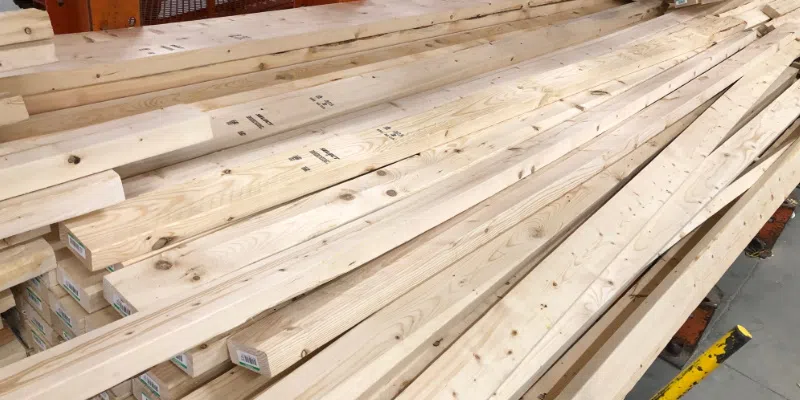Newfoundland & Labrador Lumber Industry Navigates Global Trade Currents
Table of Contents
- 1. Newfoundland & Labrador Lumber Industry Navigates Global Trade Currents
- 2. Helping Newfoundland and Labrador’s Lumber industry Reach European Markets
- 3. Shifting Gears: Newfoundland and Labrador Lumber Eyes Europe
- 4. What specific financial and logistical support could the Newfoundland and Labrador government provide to help lumber producers successfully navigate the certification and metric conversion challenges of entering the european market?
- 5. Shifting Gears: Newfoundland and Labrador Lumber eyes europe
- 6. A European Adventure Awaits: Navigating the path to Certification
- 7. What specific challenges do Newfoundland and Labrador producers face when trying to penetrate the European market?
- 8. You mentioned “studwood” producers facing particular risks. Can you elaborate on that?
- 9. What role can the Newfoundland and Labrador government play in helping producers navigate these challenges and succeed in Europe?
- 10. What message would you give to Newfoundland and Labrador consumers who are concerned about the prospect of more exports?
The Canadian lumber industry is facing a global realignment, prompted by escalating trade tensions.Newfoundland and Labrador’s producers are no exception, actively seeking new markets beyond their traditional stronghold in the United States. Europe has emerged as a promising target, offering opportunities for growth and diversification.Robin Philpott, representing the NL Lumber Producers Association, underscores the potential of this European expansion. However, he cautions that the transition won’t be without its hurdles.”The move into europe won’t be easy,” Philpott emphasizes, “due to the existing differences in standards and regulations.” he stresses the critical need for government support to navigate this complex shift successfully.The challenge is notably acute for producers specializing in “studwood”, a type of lumber primarily used for framing. “On the studwood side of things, the risks are significantly higher,” Philpott explains. “They produce a higher percentage of ‘D’ grade lumber and rely heavily on the domestic market.” Retooling to meet European metric standards poses a considerable risk for these producers.
“For them,” Philpott warns, “retooling to metric to access the European Union market means facing a potential glut of ‘below UK grade’ materials – lumber that would be acceptable for certain Canadian markets but not for the EU.”
Helping Newfoundland and Labrador’s Lumber industry Reach European Markets
Faced with these challenges, what concrete actions can the Newfoundland and Labrador government take to support its lumber producers in achieving European certification?
The Newfoundland and Labrador Lumber Producers Association welcomes government initiatives that:
* Provide financial assistance to help producers upgrade their facilities and equipment to meet European standards.
* Offer targeted training programs for workers to ensure they possess the necessary skills and expertise.
* Facilitate access to markets by connecting lumber producers with potential European buyers and distributors.
* Advocate for trade agreements that streamline the regulatory processes and reduce barriers to entry for Newfoundland and Labrador lumber.
By taking these proactive steps, the government can empower its lumber industry to adapt to the evolving global landscape and capitalize on the lucrative european market.
Shifting Gears: Newfoundland and Labrador Lumber Eyes Europe
The Canadian lumber industry is facing a crossroads. Trade tensions with the United States have forced Canadian producers, including those in Newfoundland and Labrador, to look beyond their traditional markets. Europe has emerged as a prime target, presenting both exciting opportunities and significant challenges.
“Diversifying our markets is crucial for the long-term health of the industry,” says Robin Philpott,representing the NL Lumber Producers Association. “Europe’s large construction sector and growing demand for sustainable wood products make it a meaningful possibility for newfoundland and Labrador lumber.
But the path to success won’t be easy. european markets operate under different standards and certification requirements compared to North America. Adapting to these stringent regulations will be crucial for canadian producers to gain a foothold. Adding another layer of complexity, “studwood” producers, who heavily rely on the domestic market, face the added challenge of retooling their processes to meet European metric measurements.
“The risk level for the studwood sector is much higher,” Philpott explains. “They produce more ‘D grade’ lumber and are more reliant on the domestic market. Retooling to european standards could leave them with excess material that doesn’t meet European specifications.”
Philpott emphasizes the importance of government support in facilitating this transition.”Financial assistance for businesses to adapt to European standards, as well as help with market access and promotion, would be invaluable,” he states.
Looking ahead, Philpott sees both a bright future and significant hurdles for the Newfoundland and labrador lumber industry. “While europe’s demand for sustainable lumber coupled with our province’s strong forestry resources create a promising future, the challenges are real. We need collaborative efforts from industry, government, and consumers to navigate them successfully,” he concludes.
What are your thoughts? Will Newfoundland and Labrador lumber producers thrive in the European market? share your insights in the comments below.
What specific financial and logistical support could the Newfoundland and Labrador government provide to help lumber producers successfully navigate the certification and metric conversion challenges of entering the european market?
Shifting Gears: Newfoundland and Labrador Lumber eyes europe
The Canadian lumber industry is facing a crossroads. Trade tensions with the United States have forced Canadian producers, including those in Newfoundland and Labrador, to look beyond their traditional markets. Europe has emerged as a prime target, presenting both exciting opportunities and meaningful challenges.
“Diversifying our markets is crucial for the long-term health of the industry,” says Robin Philpott, executive Director of the NL Lumber Producers Association. “europe’s large construction sector and growing demand for lasting wood products make it a meaningful possibility for newfoundland and Labrador lumber.
A European Adventure Awaits: Navigating the path to Certification
But the path to success won’t be easy. European markets operate under different standards and certification requirements compared to North America. Adapting to these stringent regulations will be crucial for Canadian producers to gain a foothold. Adding another layer of complexity, “studwood” producers, who heavily rely on the domestic market, face the added challenge of retooling their processes to meet European metric measurements.
We spoke with Robin Philpott to delve deeper into this complex landscape.
What specific challenges do Newfoundland and Labrador producers face when trying to penetrate the European market?
“The biggest hurdle is undoubtedly the difference in standards and regulations. europe has very specific requirements regarding wood quality, processing methods, and sustainability certifications. Our producers will need to invest in upgrades and training to meet these standards.
You mentioned “studwood” producers facing particular risks. Can you elaborate on that?
“the studwood sector relies heavily on the domestic market and produces a higher percentage of ‘D grade’ lumber, which may not meet European specifications. Retooling to metric measurements to access the European Union market could leave them with excess material that wouldn’t be acceptable for the EU, creating a potential oversupply and financial strain.”
What role can the Newfoundland and Labrador government play in helping producers navigate these challenges and succeed in Europe?
“we’d greatly benefit from government support in several areas. Financial assistance to help businesses upgrade their facilities and equipment to meet European standards would be a game-changer. Targeted training programs for workers to ensure they possess the necessary skills and expertise are also crucial.Moreover, facilitating access to markets by connecting lumber producers with potential European buyers and distributors would be immensely valuable.”
What message would you give to Newfoundland and Labrador consumers who are concerned about the prospect of more exports?
“Maintaining a healthy and sustainably managed forestry industry is essential to our province’s economy and surroundings. Diversifying our markets, including exploring opportunities in Europe, is crucial for the long-term viability of this vital sector. While some goods will be exported, it’s critically important to remember that a thriving lumber industry creates jobs, supports communities, and contributes significantly to our economy here at home.”
Looking ahead, Philpott sees both a bright future and significant hurdles for the Newfoundland and labrador lumber industry. “While europe’s demand for sustainable lumber coupled with our province’s strong forestry resources create a promising future, the challenges are real. We need collaborative efforts from industry,government,and consumers to navigate them successfully,” he concludes.
What are your thoughts? Will Newfoundland and Labrador lumber producers thrive in the European market? share your insights in the comments below.




